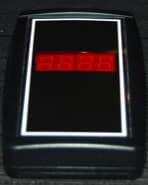As an Amazon Associate DcSoundOp earns from qualifying purchases.

Align Array has been around for a number of years now, with their website first coming to life back in 2009. With ties to L-Acoustics, Meyer Sound & PRG-Las Vegas, there’s a good chance you’ve already used one. The product was originally very basic in its first revision, and was designed and built by Sound Services LLC, out of Wisconsin. On their website at the time, they introduced themselves as “several audio professionals whom strive to provide solutions for the audio industry.”
Recently, though, Rat Sound & SoundTools purchased the whole company with the plan to bring the system in-house for further development. They’ve already been hard at work making more mounts available in various configurations, and you can see all of the current pricing and options at the Rat Sound Sales site right now.
While these systems are not cheap, their price has actually reduced considerably since their first introduction in 2009. If we consider inflation, the current price of the laser module and controller is less than half of the original.
While these are a really interesting product and are built to survive real-world production environments, the design is in need of an update. At the heart of this “Internet of Things” laser inclinometer unit is a now unsupported MIPS processor on the old ASIARF AWM002 development board. This board is no longer eligible for the latest security updates to the OpenWRT Linux Kernel it runs, and since its deprecation, there have been a number of known security vulnerabilites found.

I reached out to SoundTools for their thoughts on selling these boards in 2024, and department head Dave Knepper got back to me with this response:
You are correct about the age of the board and the open-source software that underpins the device. While we honestly weren’t aware of those details going in, we have made some recommendations for the situations you mentioned.
Just as you would not want your rigging motors or amplifiers on a public network and accessible, the laser systems would (in most cases) live on the same network. The main issues with the Luci software base being out of date would be being capable of using it in a DDOS attack or similar. If the lasers are used as intended, that will never be possible due to the separated network infrastructure.
That being said? We want to make the next version with more up-to-date chips and software.
So, they’ve got some challenges ahead to bring it in line with their usual standards, but I have no doubt they’ll manage to do that in short order. If you have any experience with this type of development and have suggestions for what you’d like to see them do next, I’d love to hear from you and get your perspective. I know the Soundtools team appreciates suggestions and ideas too, so let me know what you think of the Align Array now and going forward!
I’m looking forward to watching the development and seeing what they can do with this in the future. For now, I hope you enjoy my first look and quick teardown of what’s inside the Align Array 3.
Other laser inclinometer systems mentioned in the video include the KSG Recline and the LAP-TEQ Plus Systems. If you have experience with either of them, please reach out or leave a comment here or on the video and let me know how you think they compare.
Amazon and the Amazon logo are trademarks of Amazon.com, Inc, or its affiliates.
